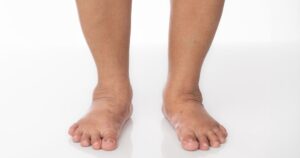Lymphedema is a condition characterized by swelling, typically in the arms or legs, caused by a compromised lymphatic system. This swelling can significantly affect a person’s quality of life and lead to complications if not properly managed. Lymphedema therapy is essential in alleviating symptoms and improving the overall well-being of those affected. Certified lymphedema therapists play a pivotal role in this process, utilizing specialized techniques and knowledge to provide effective treatment. This article delves into the nuances of lymphedema therapy, its management, various treatment options, and the critical role of certified lymphedema therapists.
What is Lymphedema Therapy and How Does a Lymphedema Therapist Help?
Defining Lymphedema Therapy
Lymphedema therapy encompasses a range of treatment modalities aimed at reducing swelling and promoting lymphatic drainage in individuals suffering from lymphedema. This therapy is essential for both primary and secondary lymphedema, where the former may arise from congenital issues in the lymphatic system and the latter often develops after cancer treatments, especially radiation therapy or surgical removal of lymph nodes. The primary goal of lymphedema therapy is to manage edema, improve mobility, and enhance the quality of life for lymphedema patients. Techniques such as manual lymphatic drainage (MLD), compression therapy, and education about self-care practices form the foundation of a comprehensive lymphedema therapy program.
The Role of a Certified Lymphedema Therapist
A certified lymphedema therapist is a trained specialist who understands the complexities of the lymphatic system and is equipped with the skills necessary to provide effective lymphedema treatment. These therapists undergo rigorous training and certification in lymphedema therapy, which enables them to assess the severity of lymphedema, design individualized therapy programs, and implement appropriate treatment techniques. Their expertise allows them to educate patients about self-management strategies, such as the use of compression garments and exercises that promote lymph drainage. By working closely with patients, certified lymphedema therapists ensure that each individual receives tailored care that addresses their unique needs and circumstances.
Key Techniques Used in Lymphedema Treatment
Among the various techniques employed in lymphedema treatment, manual lymphatic drainage (MLD) is one of the most effective. This specialized form of massage therapy stimulates the lymphatic system, encouraging the natural drainage of lymph fluid from the affected areas. In conjunction with MLD, compression therapy is utilized to maintain reduced swelling and prevent the re-accumulation of lymphatic fluid. Compression garments, bandages, and other lymphedema products are essential tools that help manage swelling and provide support to the extremities. Complete decongestive therapy (CDT) is another comprehensive approach that combines MLD, compression, skin care, and exercise to facilitate optimal lymphatic function and enhance overall rehabilitation.
How Does Lymphedema Management Work?
Components of an Effective Lymphedema Program
An effective lymphedema management program is multifaceted, involving a combination of therapeutic techniques, patient education, and ongoing self-care. The primary components include manual lymphatic drainage, compression therapy, and active exercise regimens tailored to the patient’s needs. Certified lymphedema therapists develop personalized therapy programs that consider the individual’s medical history, the severity of the condition, and the specific areas affected. Regular follow-up sessions are critical to monitor progress, adjust treatment plans, and provide ongoing support to patients as they navigate their lymphedema journey.
The Importance of Early Detection and Prevention
Early detection of lymphedema is crucial in preventing the condition from worsening. Individuals at risk, particularly those who have undergone cancer treatment involving lymph node removal or radiation therapy, should be educated about the signs and symptoms of lymphedema. By recognizing early symptoms—such as mild swelling, a feeling of heaviness in the affected limb, or changes in skin texture—patients can seek timely intervention. Preventive measures, including routine self-examinations and adherence to prescribed therapy programs, can significantly reduce the risk of developing severe lymphedema.
Rehabilitation Strategies for Lymphedema Patients
Rehabilitation for lymphedema patients extends beyond immediate symptom management; it also aims to enhance the overall functionality and quality of life for those affected. A combination of physical and occupational therapy methods is often employed, focusing on improving mobility and strength in the affected limb. Patients may be guided through specific exercises designed to stimulate lymphatic flow, as well as taught effective techniques for self-massage and skin care. Certified lymphedema therapists also play a vital role in educating patients about lifestyle modifications, including weight management and proper nutrition, which can contribute to long-term lymphedema management.
What Are the Different Types of Lymphedema Treatment?
Compression Garments: Types and Benefits
Compression garments are a cornerstone of lymphedema treatment, designed to provide external pressure that helps maintain proper lymphatic flow and reduce swelling. These garments come in various styles and compression levels, catering to the specific needs of each patient. For example, arm sleeves, leg stockings, and abdominal binders can be utilized depending on the affected area. The benefits of wearing compression garments include decreased edema, improved comfort, and enhanced mobility. Patients often receive guidance from certified lymphedema therapists regarding the appropriate type of garment and how to wear it effectively for the best results.
Manual Lymphatic Drainage Techniques
Manual lymphatic drainage (MLD) techniques are integral to lymphedema treatment, as they facilitate the movement of lymphatic fluid and promote its drainage from swollen areas. This gentle, rhythmic massage technique employs specific hand movements that stimulate the lymphatic vessels, allowing for improved lymph circulation. Certified lymphedema therapists are trained in these techniques to ensure that patients receive safe and effective MLD sessions. Regular MLD can significantly reduce swelling and discomfort, making it a vital component of a comprehensive lymphedema therapy program.
Complete Decongestive Therapy Explained
Complete decongestive therapy (CDT) is a holistic approach that combines several treatment modalities to achieve optimal lymphedema management. CDT typically includes manual lymphatic drainage, compression therapy, skin care, and therapeutic exercises. This comprehensive approach ensures that all aspects of lymphedema are addressed, from reducing swelling and promoting lymphatic drainage to preventing infections and maintaining skin integrity. Patients undergoing CDT can expect a structured therapy program delivered by certified lymphedema therapists, who will tailor the treatment plan according to the patient’s specific needs and responses to therapy.
How Does Cancer Treatment Affect Lymphedema?
The Connection Between Cancer and Lymphedema
Cancer treatment can significantly impact the lymphatic system, often leading to the development of lymphedema. Surgical interventions, such as lymph node removal, and radiation therapy can disrupt normal lymphatic drainage, resulting in the accumulation of lymph fluid and swelling. This condition is particularly common among breast cancer survivors, where lymph node dissection and radiation therapy are frequently employed as part of treatment protocols. Understanding the connection between cancer treatment and lymphedema is vital for patients to recognize potential symptoms and seek appropriate therapy early on.
Managing Lymphedema After Breast Cancer Treatment
For many breast cancer survivors, managing lymphedema post-treatment is a crucial aspect of their recovery journey. Certified lymphedema therapists play an essential role in providing education and support tailored specifically for these patients. Strategies may include the use of compression garments, manual lymphatic drainage, and exercises to enhance lymphatic circulation. Encouraging early intervention and consistent management practices can significantly reduce the severity of lymphedema, ultimately improving the quality of life for breast cancer survivors.
The Role of an Occupational Therapist in Cancer Recovery
Occupational therapists also play a significant role in the recovery process for cancer patients, particularly those experiencing lymphedema. These therapists specialize in helping individuals regain functional independence and adapt to changes resulting from their treatment. They work collaboratively with certified lymphedema therapists to provide a comprehensive approach to care, addressing both the physical and emotional aspects of recovery. By focusing on rehabilitation strategies, occupational therapists can empower patients to engage in daily activities while managing the challenges posed by lymphedema.
Where Can You Find a Certified Lymphedema Therapist Near You?
Tips for Locating a Qualified Lymphedema Specialist
Finding a certified lymphedema therapist is crucial for individuals seeking effective lymphedema management. To locate a qualified specialist, patients can start by consulting their healthcare providers or oncologists, who may have recommendations based on their experience. Additionally, many hospitals and rehabilitation centers offer lymphedema therapy services. Online directories, such as the Norton School of Lymphatic Therapy’s website, also provide listings of certified lymphedema therapists, making it easier for patients to find local specialists.
Questions to Ask When Choosing a Therapist
When selecting a certified lymphedema therapist, patients should consider asking specific questions to ensure they receive appropriate care. Inquire about the therapist’s experience in treating lymphedema and their approach to developing personalized therapy programs. Additionally, understanding the types of treatment modalities they employ, such as manual lymphatic drainage and compression therapy, can provide insight into their methods. It is also beneficial to discuss any concerns regarding insurance coverage and treatment costs upfront.
Understanding the Certification of Lymphedema Therapists
Certification in lymphedema therapy is an essential indicator of a therapist’s expertise and commitment to providing high-quality care. Certified lymphedema therapists have completed specialized training programs that equip them with the knowledge and skills necessary to manage this complex condition effectively. Patients should look for certifications from recognized organizations, which often require ongoing education to maintain credentials. Understanding the significance of these certifications can help patients make informed decisions when selecting a therapist for their lymphedema management needs.
FAQS
Q: What is the role of lymphedema therapists in the treatment of lymphedema?
A: Lymphedema therapists are specially trained professionals who focus on the management and treatment of lymphedema. They utilize techniques such as manual lymph drainage, compression bandages, and education on skin and nail care to help patients manage their symptoms and improve the flow of lymphatic fluid.
Q: How does primary lymphedema differ from secondary lymphedema?
A: Primary lymphedema is a genetic condition that arises from malformations in the lymphatic system, while secondary lymphedema is typically caused by external factors such as surgery, radiation, or injury that damage the lymphatic system. Lymphedema therapists can assist in both types of lymphedema management.
Q: What techniques do lymphedema therapists use to help with lymphatic system issues?
A: Lymphedema therapists commonly employ techniques such as manual lymph drainage, compression therapy, and education on self-care practices to enhance the movement of lymph and reduce swelling. These methods are designed to reduce lymphedema symptoms and improve quality of life.
Q: Can lymphedema therapists also provide lymphedema evaluations?
A: Yes, trained lymphedema therapists perform comprehensive lymphedema evaluations to assess the severity and extent of the condition. This evaluation helps in creating a personalized treatment plan that addresses the specific needs of the patient.
Q: What are the symptoms of lymphedema that therapists can help manage?
A: Common lymphedema symptoms include swelling in the limbs, a feeling of heaviness, tightness in the skin, and recurrent infections. Lymphedema therapists are skilled in techniques to alleviate these symptoms and improve overall function.
Q: How can lymphedema be treated effectively?
A: Lymphedema can be treated effectively through a combination of manual lymph drainage, compression bandages, exercise, and skin care. Lymphedema therapists will tailor a treatment plan based on the patient’s specific lymphedema diagnosis and needs.
Q: What is the significance of the Norton School of Lymphatic Therapy in lymphedema treatment?
A: The Norton School of Lymphatic Therapy is a reputable institution that trains professionals in lymphology and lymphedema management. Graduates from this school are equipped with the knowledge and skills needed to provide effective lymphedema treatment and patient education.
Q: How does lymphedema affect skin and nail care?
A: Lymphedema can cause changes in skin texture and increase the risk of infections. Lymphedema therapists educate patients on proper skin and nail care techniques to eliminate bacterial and fungal growth and maintain skin health.
Q: Can physical therapists also treat lymphedema?
A: Yes, some physical therapists are trained in lymphedema management and can provide treatment. However, it is essential to ensure they have specialized training in lymphedema therapy to effectively address the unique challenges of the condition.





